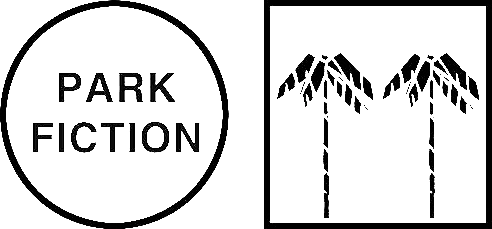THOMAS ORTMANN, KLAUS PETERSEN, CHRISTOPH
SCHÄFER, SABINE STÖVESAND, AXEL WIEST
„Someday, wishes will leave the house and hit the streets…. They’ll put an end to the reign of boredom and bureaucratically managed misery.“ This was the leitmotif for a group of artists and musicians who joined a citizens‘ initiative in 1994 in the harbor area of St. Pauli, the red-light district in Hamburg and one of the citys poorest quarters. Their goal waS tg stop plans for construction on the last remaining open spaceand to have the city build a collectively designed park instead. The campaign and the planning process that followed brought together and enriched art, subculture, and politics in unique ways. lt was not just about open space, but abeut organizing a collective process guided by the individual wishes and desires of the quarter’s inhabitants. This „wishproduction“ resisted the dominant interests of economic
policy propagated by „the ImageCity“ (Schäfer). Infotainment“ (lectures, actions, concerts, raves, open-air movie screenings, and exhibitions) formed the basis for the planning process, reflecting the social, historical, and political importance of gardens and parks and the construction of public spaces. In order to make it possible for peopie to articulate their wishes, artists Christoph Schäfer and Cathy Skene developed various tools for the initiative: a wish
archive, a garden library, a clay modeling office, a wish hotline, a planning container, and an action kit (mobile planning briefcase). The artists also distributed questionnaires and
plans for the public to fill out.
Margit Czenki joined the Park Fiction group in 1997 to capture on film the energetic spirit of the planning process. The film shows the wide variety of wishes as weil as the pro-
ject’s different participants. The open planning process allowed participants to filter and combine aesthetic and practical desires with political achievement. Frequently
mentioned wishes, such as a fountain, were matched with individual plans, resulting in the „Pirate Fountain,“ for example, while everyone agreed to the wish for a „strawberry tree
house where grown-ups aren’t allowed.“
The planned construction was stopped. After eight Years of radical democratic urban planning and negotiations, Park Fiction is now being realized. lt is a unique example of a combination of Conceptual Art and collective subjectivity, navigating between private and public space and various cultural fields: a project in which differing interests were able to benefit each other. „The park is a utopian place; its Model is paradise…. The park shows us what the world Could be like“ (film quote).
Christiane Mennicke
